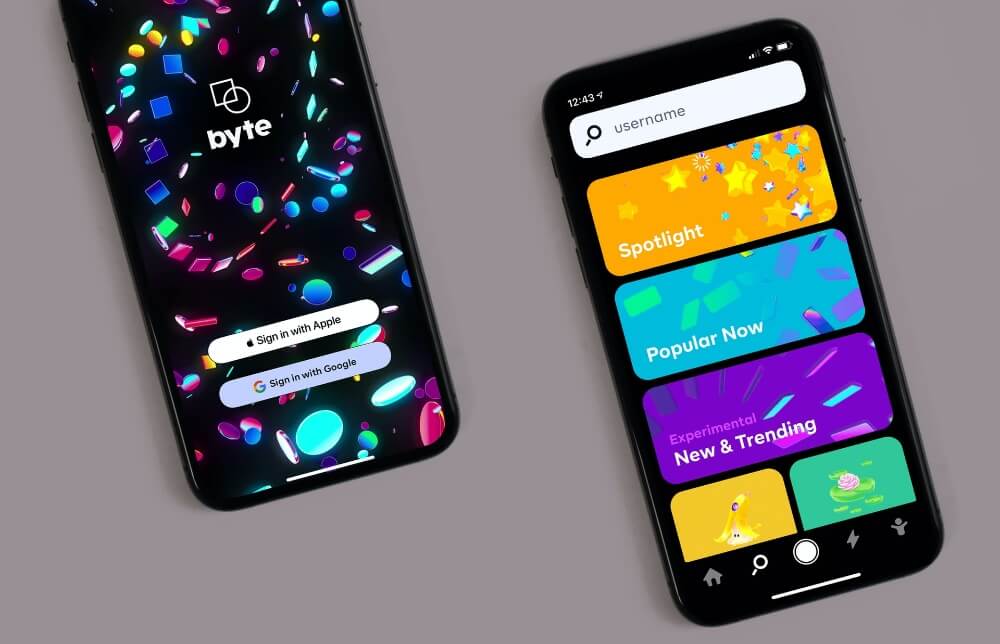
Nowadays, it’s all about getting people’s attention. You, as a consumer, may have noticed how brands desperately fight for your time. They use bright ads, interesting articles, FAQs, chatbots, and even AR (augmented reality) elements.
And as a business owner, you may be looking for more ways to be seen by your target audience. Content engagement can help you with that, especially if you know what kinds of content to use and how to measure the metric.
Thankfully, we’ve got a handy guide for you, without difficult terms or complicated funnels. Make it your cheatsheet when crafting a content plan.
What Kind of Content Engages Users the Best
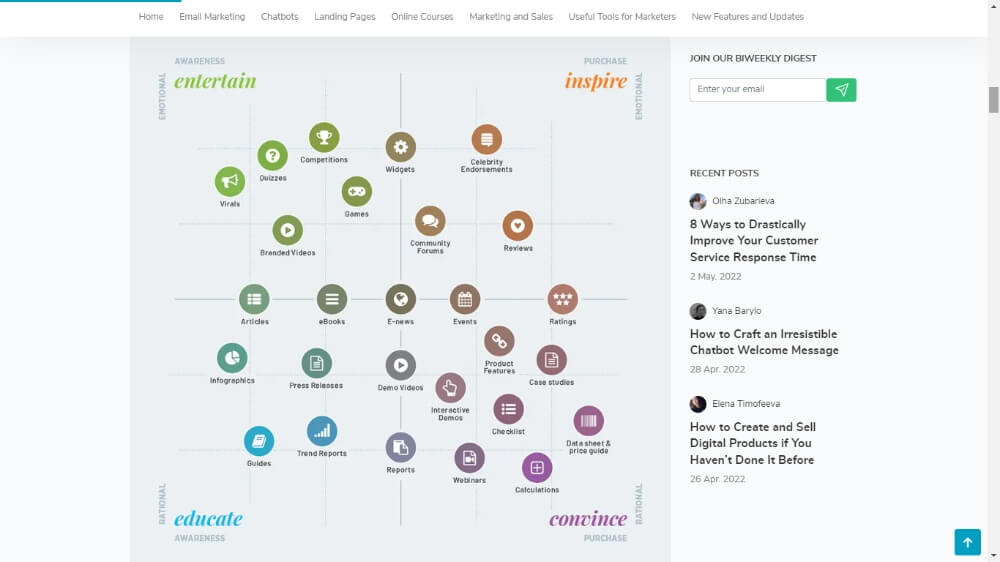
Let’s get to the answers right away. What content engages users the best?
We love the concept of the content matrix. It contains the types of content most websites find engaging:
For storytelling, entertainment, connection.
Learn about the demographics of your target audience. Then, write an interesting, funny, and exciting story about your first product or how you founded the company. Or, write about a relevant topic that isn’t connected to your business.Use descriptions, leave cliffhangers, add memes and GIFs, appeal to readers’ emotions, arrange quizzes and games, introduce branded videos. Create a connection with readers and they will come back. It is becoming more and more convenient nowadays to create great memes usings an online meme maker or video editor.
Ideally, this should be the first type of content people see on your site.
For education, proper knowledge, understanding.
Write a guide about using your products. Create a clear step-by-step guide in easy-to-understand language to appeal to users’ rationality. Educate readers on your products, their usefulness, your philosophy, trends in the industry, infographics, news, eBooks, etc.This post you are reading at the moment is also an educational piece, so you get the idea.
For inspiration, encouragement, shares.
Introduce a piece that shows your potential customers how your products or services will enhance their life. ‘10 Benefits You’ll Get When Your [product name] Arrives’ or something similar should be inspiring, persuading, and encouraging.Post reviews, influencer endorsements, and interesting stats to inspire the readers. The articles, videos, and images created with passion have more chances to get more shares, which boosts brand awareness and brings more people to the site. So, make sure the piece is easy to share on social media.
For action and conversion.
Now, the final kind of engaging content is for action and conversion. Think of a focus action you want your curious readers to perform. It can be signing up for a newsletter, downloading a free guide or course, or even purchasing a product.Show some statistics, introduce data sheets, calculations, case studies, and detailed product features that encourage people to do what you want them to. If they go through all types of engaging content on your website, conversion shouldn’t be too difficult to achieve.
How to Measure Content Engagement
Diversifying your content will definitely work, but you’ll need some proof. There’s no separate metric called ‘content engagement’, but there are several relevant metrics you can see right there on your website and get from Google Analytics:
Time spent on page.
Time spent on page is a metric showing how much time users spend on individual pages during one session. Along with the other metrics we describe here, you can create a picture of how interesting and engaging your content is.Session duration.

Session duration shows how long users spend on your site on average. It doesn’t have to be too long. For example, if it’s a Homepage > Contact Us page session, the person usually spends a couple of minutes looking for and copying your phone number or email.Pages per session.

Pages per session are exactly what the name suggests. The metric indicates how engaging your website is by showing how many pages people go through in one visit.Bounce rate.

Another piece of the puzzle is the Bounce rate – the ratio of visitors that close/leave the page they landed on without any action at all. Again, it doesn’t have to be low all the time. Sometimes a high bounce rate on certain pages may indicate that you’re giving a clear answer and there’s no need to perform any other actions.Conversion rate.

Your conversion rate shows how well the content performs on landings and other pages where you have a focus action you need the visitors to do.Social media interactions.
The number of likes, shares, comments, retweets, reposts, Story replies, etc. (depending on the service you’re using) can show the engagement rate of your content, given that you have an active audience.Blog post shares and comments.
On the website, seeing the number of shares on Facebook, Twitter, Instagram, etc., views, and comments will also show you what types of content work the best for your target audience.
Such insights, along with our recommendations, should help you create killer content plans.
The 7 Types of Content that Increase User Engagement
Now that you know some different kinds of engaging content and how to measure engagement when you need it, let us exhibit the TOP content types for 2022.
#1: How-To Guides
How-to guides are eternal. Have you seen how huge wikiHow has become? It has partnered with the United Nations Foundation, Amazon, Samsung, Mental Health America, and other world-renowned organizations.
All because people look online when they need to learn how to do something.
Creating another wikiHow on your website isn’t going to work since that service already covers thousands of topics. You just need to cover topics relevant to your business and its products or services.
To find a topic your target audience is curious about, you should first research keywords, find out users’ search intent, the most popular queries, and long-tail keywords that sound like questions.
For that, you’ll need keyword search software that will show you a list of ideas, keyword difficulty, search volume, and more in handy graphs that are easy to understand even if you’re not an SEO specialist.
Based on the key terms, create a topic and write a detailed how-to guide that will answer readers’ questions.
Content marketing outsourcing might be a winning solution to produce high-quality web pages and articles that drive organic traffic and promote your brand.
Tip: The perfect length for a blog post is from 1,500-2,000 words.
#2: Video Content
A study showed that in 3 days, a human retains 65% of visual information they receive, compared to only 10-20% of the information they read or hear. Video content is more engaging because it entertains and catches attention.
For example, in addition to a written description of your product, add a video where someone uses it, shows how to do something, etc. You have probably already seen Instagram IGTV videos that have the products shown in them listed once you touch the picture.
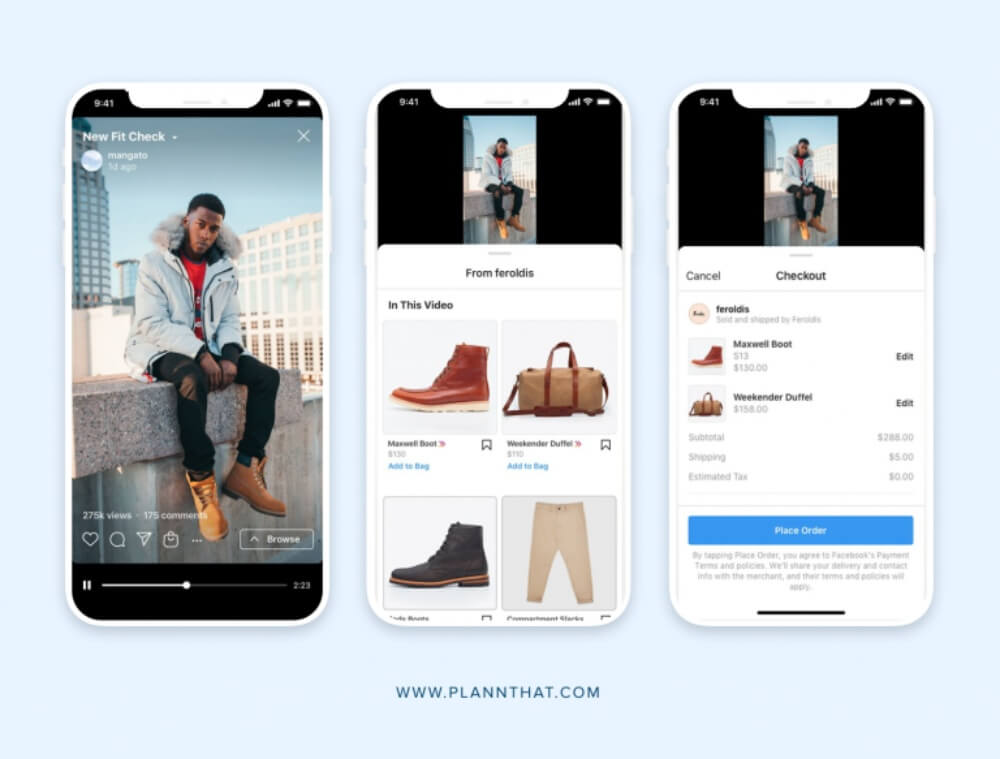
Img cr: https://www.plannthat.com/how-to-use-igtv-shopping-to-drive-more-sales/
Besides, visual content shows an aesthetic and puts your product or service into context, creating the right impression and possibly increasing conversion.
#3: User-Generated Content (UGC)
User-generated content or UGC is one of the best ways to improve your marketing and create social proof for potential customers to refer to.
9 of 10 consumers read reviews before buying something online. A review posted on social media with a couple of pictures and several words about your brand helps. Even a simple positive comment under your Instagram post where you present a product will work for most people.
Businesses try to catch our attention so much now that trust in official content has decreased because no company will tell you “Well, this product is great but the material quality could be better”.
So, we turn to peers.
If someone likes your product or service, offer them a discount or just ask them to spread the word. This will increase the trust of the people who are considering buying from you.
#4: Giveaways
Giveaways are one of the most interactive types of content, mostly because people are interested in winning. You can give them free products, discounts, free deliveries, or other rewards for easy actions.
These actions can be simply leaving contact information or joining an email newsletter, as well as sharing your content with friends, doing social media shares, etc.
Giveaways offer a ton of benefits for businesses:
Gaining more leads
Improving conversion rates
Enhancing email lists
Free social media PR, etc.
Such events are quite popular on Instagram, growing audiences for brands and influencers.
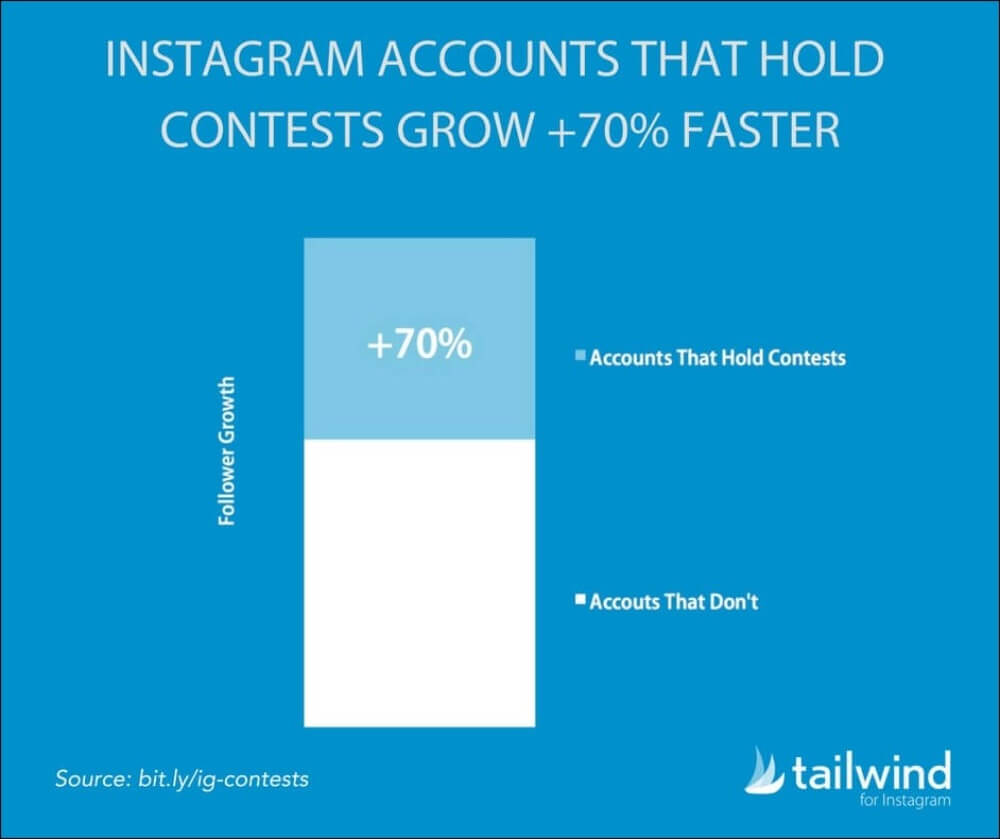
Img cr: https://outgrow.co/blog/contests-giveaways-examples
But you can use your email list or post about a giveaway publicly on your website.
For example, Huawei held such an event in 2020 among their users. All they had to do was download an app.
#5: AR (Augmented Reality) Storytelling
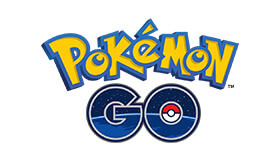
Img cr: https://www.pokemon.com/
Do you remember Pokemon Go? You could see people everywhere with their phones having fun with a classic example of an augmented reality experience.
Why not try incorporating it into your content? Not the game, but the AR tech.
According to a study, the AR and VR market is going to reach $161.1 billion by 2025. This means that its popularity will only grow, so it won’t be an empty investment. You can use AR in the following industries:
Decor and design
Beauty and cosmetics
Healthcare
Gaming
Retail, etc.
Basically, you want to help people try your products before they can physically test them. Allow them to see the new decor of their rooms, makeup on their faces, clothes on their bodies, etc.
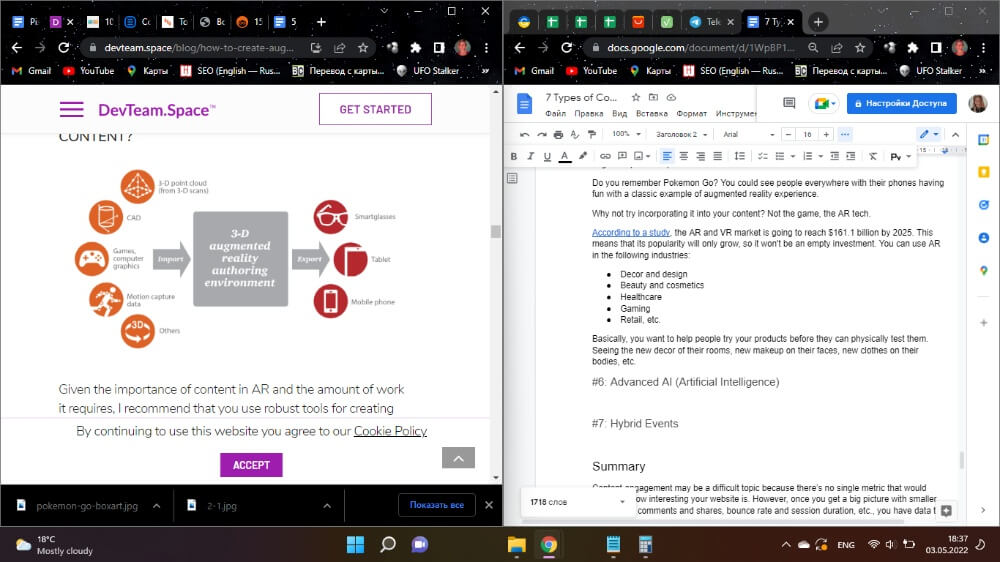
Img cr: https://www.devteam.space/blog/how-to-create-augmented-reality-content-for-your-business/#3
In the future, it’s highly possible that AR will go far beyond visual enhancements. We’ll be able to feel texture, listen, and interact with things.
#6: Advanced AI (Artificial Intelligence)
Uniting human efforts and artificial intelligence will help you learn more about your customers and target audience and communicate with them in their language. Imagine being able to answer people’s questions before they even ask them.
Here are some uses of AI to consider:
Advanced data analysis
Pattern recognition
Quality checks for your content
Optimized blog post creation and improvement
Chatbots that provide 24/7 help
For example, Netflix uses AI to choose images that boost engagement, create video metadata, and much more.
#7: Hybrid Events
Hybrid events are some of the best ways to present content in terms of engagement. After all, your audience is there live on the receiving end. On the other end, there are expert guests with informational, educational, or entertaining information.
You can interact with people live and get to know your buyers personally. You can:
Use 3D elements to enhance the content you present
Offer an option to interact with speakers, ask questions, share opinions
Offer the attendees to engage with each other
Summary
Content engagement may be a difficult topic because there’s no single metric that shows you how interesting your website is. However, you can see the big picture with smaller metrics like comments and shares, bounce rate and session duration, etc.
Focus on how-to guides to educate your readers, and upload branded videos to entertain them and create a connection. You can go as far as using AR and AI to retain customers, but don’t forget about hybrid events that can help you convert more leads.
Diversify your content, and make it inspiring, entertaining, and educational to create the right first impression.